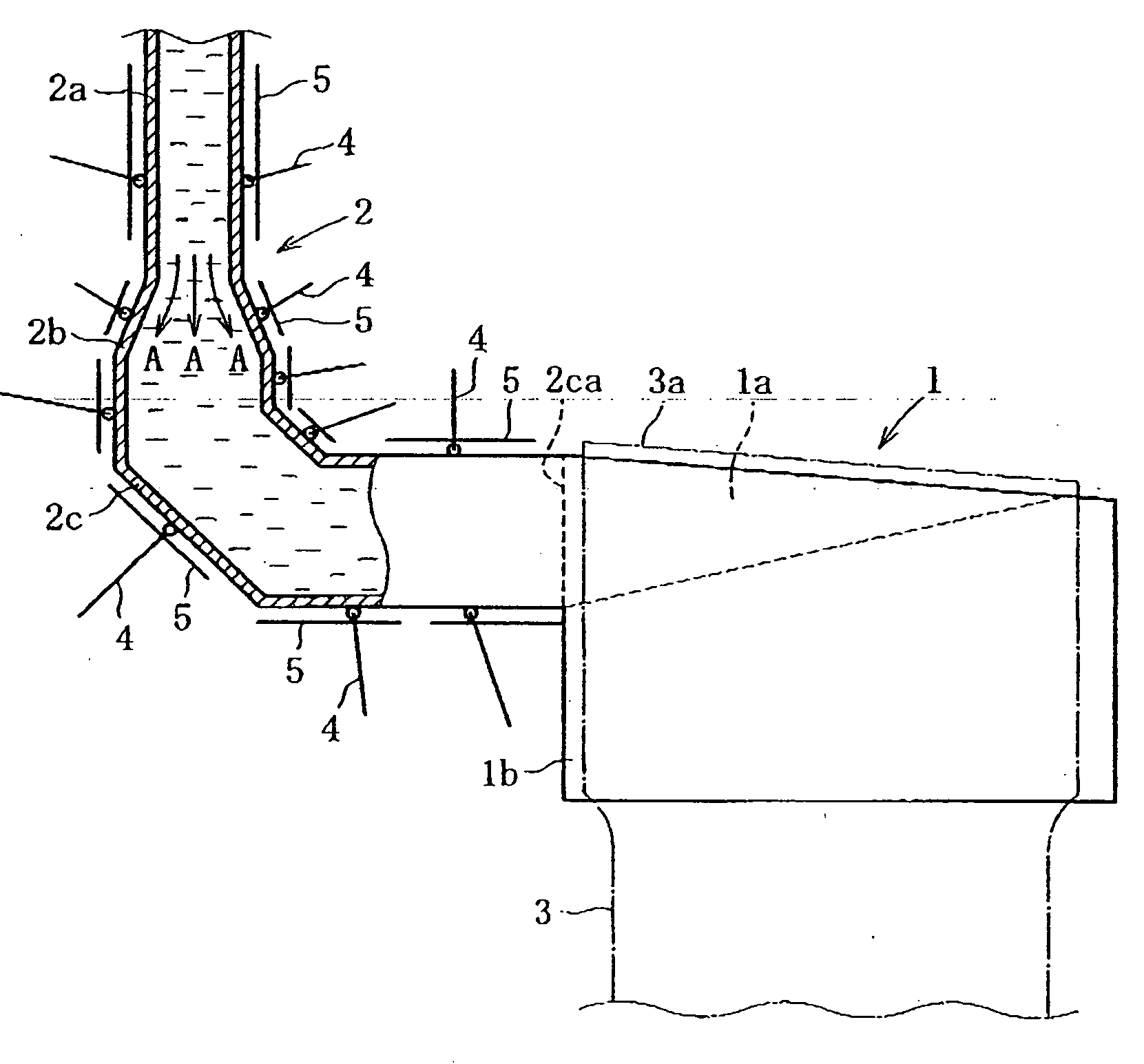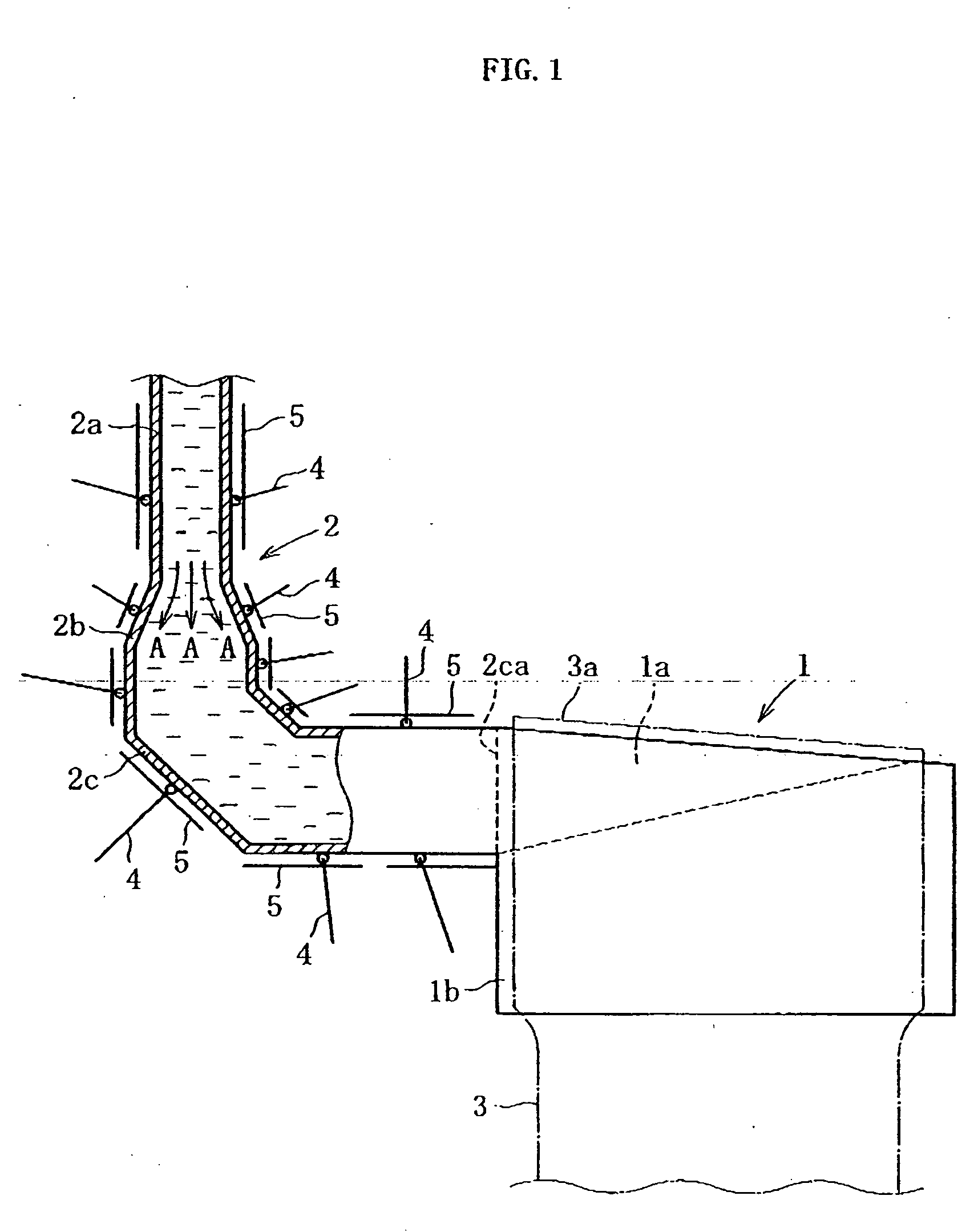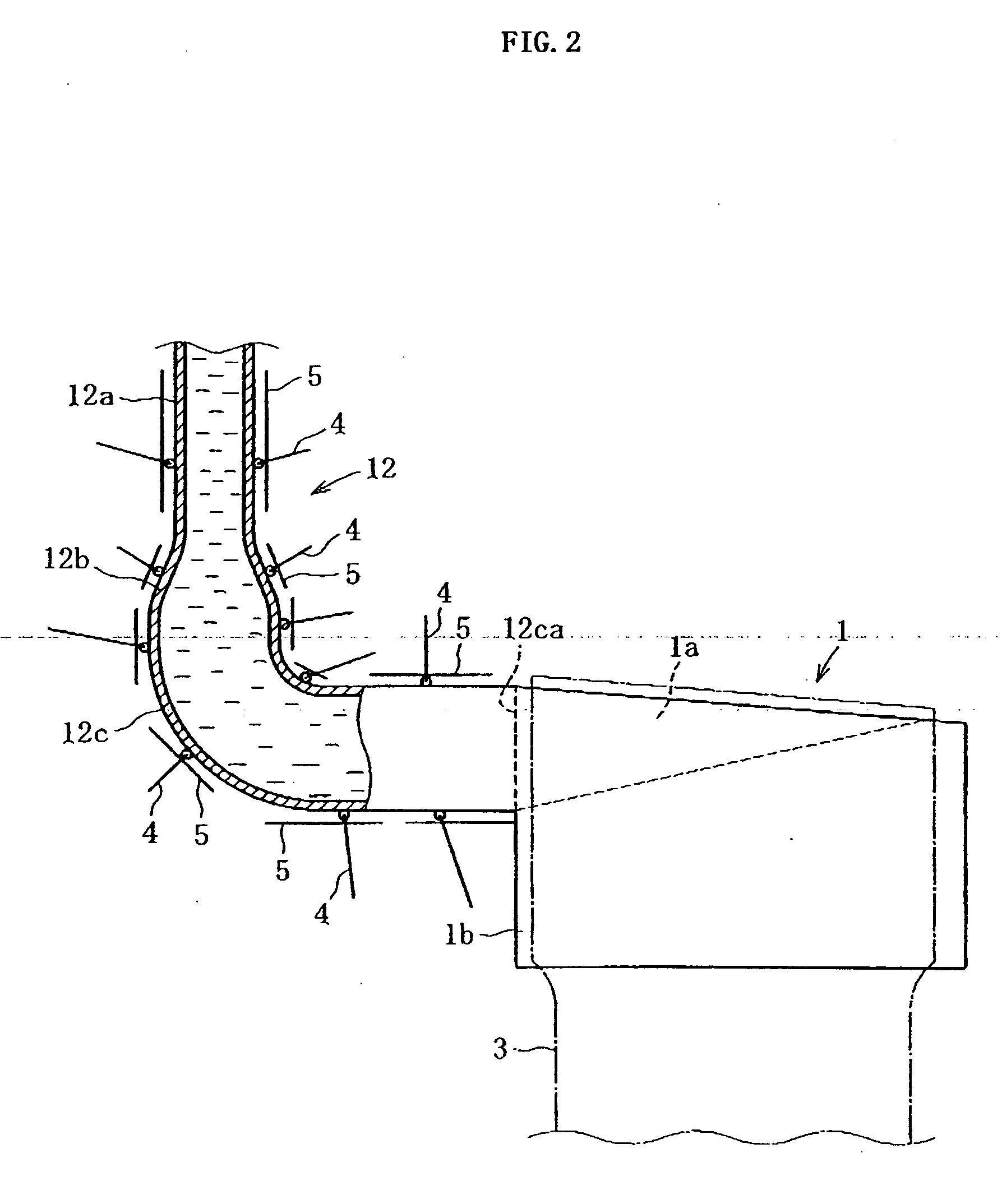Device for Manufacturing Sheet Glass and Method for Manufacturing Sheet Glass
a technology of sheet glass and manufacturing method, which is applied in the direction of glass making apparatus, glass rolling apparatus, manufacturing tools, etc., can solve the problems of reduced quality or yield of sheet glass, and inability to eliminate the significant so as to improve the quality or production yield of the sheet glass, the effect of significant reduction of the reduction or stop of the flow speed of the molten glass and the reduction of the total
- Summary
- Abstract
- Description
- Claims
- Application Information
AI Technical Summary
Benefits of technology
Problems solved by technology
Method used
Image
Examples
first embodiment
[0047]First, a device for manufacturing sheet glass according to the present invention will be described with reference to FIG. 1. A supplying tube 2 connected to a forming vessel (a groove-shaped overflow vessel) 1a in a forming furnace 1 shown in the figure is provided in a downstream end portion of a supplying passage (all supplying passages) of a molten glass from a melting furnace (not shown) to the overflow vessel 1a. The supplying tube 2 is composed of: a small diameter tube portion 2a of which upstream end is connected to, for example, a vessel (not shown) for soaking the molten glass and which has a small flow passage area; an expanded diameter tube portion 2b which is integrally and continuously connected to the downstream end of the small diameter tube portion 2a and of which flow passage area (tube diameter) gradually expands toward the downstream; and a large diameter tube portion 2c which is integrally connected to the downstream end of the expanded diameter tube porti...
third embodiment
[0054]In the present invention shown in FIG. 3a, a supplying tube 22 is divided into a small diameter tube portion 22a having a substantially constant diameter, and an expanded diameter tube portion 22b and a large diameter tube portion 22c which are integrally and continuously connected to each other, and a downstream end portion of the small diameter tube portion 22a is inserted into an upstream end portion of the expanded diameter tube portion 22b to be overlapped with each other. Even with such structure, it is possible to suppress a rapid change of the flow rate of the molten glass supplied from the downstream end of the large diameter tube portion 22c to the overflow vessel in the forming furnace, and sufficiently suppress the devitrification or the bubble generation caused by the partial reduction in flow speed or stoppage of the molten glass, as compared with the conventional art.
[0055]In a fourth embodiment of the present invention shown in FIG. 3b, a supplying tube 32 is d...
PUM
| Property | Measurement | Unit |
|---|---|---|
| Temperature | aaaaa | aaaaa |
| Flow rate | aaaaa | aaaaa |
| Diameter | aaaaa | aaaaa |
Abstract
Description
Claims
Application Information
 Login to View More
Login to View More - R&D
- Intellectual Property
- Life Sciences
- Materials
- Tech Scout
- Unparalleled Data Quality
- Higher Quality Content
- 60% Fewer Hallucinations
Browse by: Latest US Patents, China's latest patents, Technical Efficacy Thesaurus, Application Domain, Technology Topic, Popular Technical Reports.
© 2025 PatSnap. All rights reserved.Legal|Privacy policy|Modern Slavery Act Transparency Statement|Sitemap|About US| Contact US: help@patsnap.com



